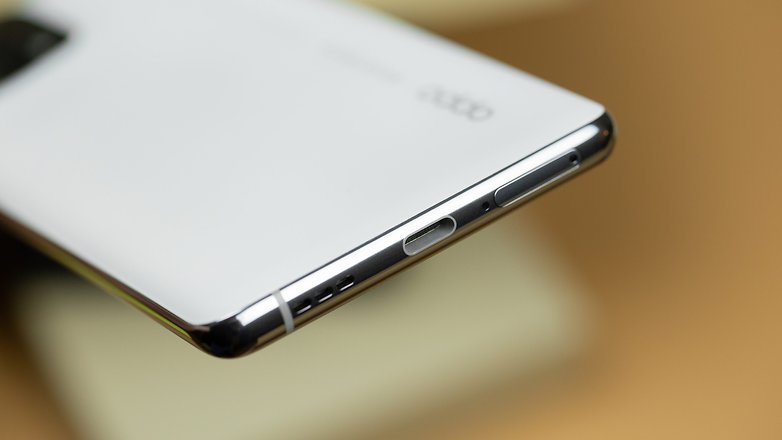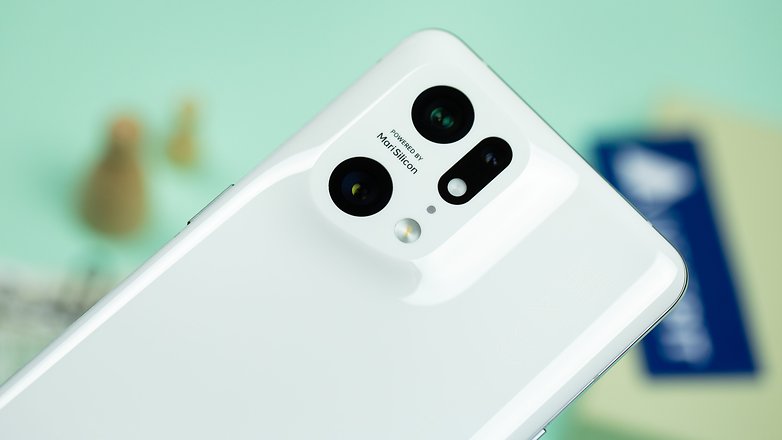Oppo Find X5 Pro, Find X5 & Find X5 Lite: Oppo's new smartphones compared


Oppo unveiled its new smartphones on February 24, 2022. Led by the Oppo Find X5 Pro, the new flagship lineup is completed by the Oppo Find X5 and the Find X5 Lite. How do the three models differ, how much do they cost, and what do they look like? Let's clarify everything in this article.
Last year, Oppo scored a real coup with its Find X3 Pro, which rightly received plenty of praise. Now Oppo follows up on that act and adhering to Chinese superstition, omits the number 4 and presents us with the Find X5 series. It comprises three models with some very major differences on the specifications.
RELATED
In this article, we will introduce the Find X5 Pro, but also the base model Find X5 and the slimmed-down Find X5 Lite. As usual, we will begin with a direct comparison of the most important specs:
We will focus on the specifications of the three devices in this article. If you want to delve deeper into the matter, you should definitely read our review of the Oppo Find X5 Pro and our hands-on of the Find X5. The three new smartphones will not be available in stores until March 21. All pricing is stated in Euros because Oppo does not officially release their smartphones in the US.
Jump to:
- Display and frame
- Performance and connectivity
- Cameras
- Software
- Battery and Quick Charging
- Price and availability
- Conclusion
Oppo Find X5 series: Display and frame
If we were to take a look at the screen size, nothing has changed: That means the Lite model measures 6.43-inches across diagonally yet again. The base model, which was still labeled as "Neo" last year, remains at 6.55-inches, while the Pro maintains the 6.7-inch outlook. We find AMOLED panels across all three devices: FHD+ and a 90 Hertz refresh rate in the Lite, FHD+ and 120 Hertz refresh rate in the Find X5, while the Find X5 Pro lets it rip with WQHD+ resolution, a 120 Hertz adaptive refresh rate, up to 1,300 nits of brightness, and one billion colors.

Want to have more information about the "Bionic Display" that is found on the Pro model? Gladly: The 10-bit panel supports HDR10+, offers a touch sampling rate of 1,000 hertz and scores with a screen-to-body ratio of 92.7 percent. Thanks to LTPO technology, the refresh rate varies between 1 and 120 Hz, which should also save energy in the process.
The display's respective camera bumps alone tell us that we are dealing with a trio of devices that are from different worlds in terms of pricing. The raised camera island of the Find X3 Pro looks better and the name "Hasselblad" is also prominently displayed at the back. By the way, the back of the Pro is made from ceramic for a more premium feel. The vanilla model is made of glass, while the Lite uses good old polycarbonate. Only the Pro is IP68-certified (Find X5: IP54, Find X5 Lite: IPX4).

By the way, if you were to look around the devices, you will notice that only the Lite model offers a slot for a microSD card as well as a 3.5 mm audio jack. Not only that, the slot for the microSD card also accommodates two nano-SIM cards. Dual-SIM is also available in the two larger siblings, but only with the combination of 1x nano-SIM and 1x eSIM.
Oppo Find X5 series: Performance and connectivity
It is also worth taking a closer look at the performance. While Samsung uses the same SoC for all three variants of its Galaxy S22 series, we can see differences in the Find X5 devices. The Pro relies on the combination of Snapdragon 8 Gen 1, Adreno 730, and 12 GB of RAM to keep things chugging underneath the hood. Oppo has also added its new "MariSilicon X Imaging NPU" to the octa-core SoC, which is supposed to provide better photos.
Oppo still relies on the Snapdragon 888 with Adreno 660 and 8 GB of RAM in the Find X5. Finally, the Lite comes without Qualcomm's SoC. The MediaTek Dimensity 900 is used instead, and is flanked by the ARM Mali-G68 and also 8 GB of RAM (but LPDDR4X instead of LPDDR5).

All three smartphones offer 256 GB of storage, whereby only the Lite does without UFS3.1 in favor of UFS2.2. As mentioned above, you can only expand the storage on the Lite. Too bad, Oppo, if there is only one storage option, space for a microSD card would have been nice to have on the flagship.
All three models support both LTE and 5G networks. Bluetooth 5.2 and NFC are also found in all three smartphones. However, there are subtle differences when you look closely. USB Type-C 2.0 instead of 3.2 has to suffice for the Lite.
Oppo Find X5 series: Cameras
The cameras found in last year's Oppo flagship were so successful that Ben even wrote a love letter to the Find X3 Pro. Oppo does without the undoubtedly fun gimmick of the microscope camera this time around. Instead, they decided to get serious with the "MariSilicon X" image processor on board. According to Oppo, this enables night videos to be shot in 4K and 20-bit HDR. Oppo was also able to win over Hasselblad as a partner, and having camera heavyweights in your corner is always a good thing.

In bare numbers, what does it mean for the Pro: 50 MP each wide-angle and ultra-wide-angle sensors (both Sony IMX 766 sensors) as well as a 13 MP telephoto camera? 2x optical zoom is possible, as well as 5x hybrid and 20x digital zoom. The setting in the Find X5 is almost identical, but the base model offers optical stabilization for photos on only two axes, while the flagship has 5-axis stabilization.
The Lite model only stabilizes electronically and also offers a slightly different camera setup: There is a main camera with 64 MP, plus an 8 MP ultra-wide-angle, and a 2 MP macro shooter. The Lite only offers 20x digital zoom. You can find out how the cameras perform in our review units in the articles linked above. However, you are more than welcome to let us know in the comments if you want us to dive into more detail about the camera features!
Oppo Find X5 series: Software
Those who have already dealt with Oppo smartphones know the ColorOS, which is based on Android. I recommend our ColorOS 11 test and our ColorOS 12 pre-release review. As you can imagine, there are also differences between the models in terms of software: Find X5 and Find X5 Pro arrive with Android 12 plus ColorOS 12.1, while the Lite model runs on Android 11 and ColorOS 12.

Oppo is now a bit behind Samsung in terms of its update policy. This means that you will "only" receive four years of security updates and three major Android updates. Bummer!
Oppo Find X5 series: Battery and Quick Charging
Oppo already impressed with its quick-charging capabilities last year, and now, things have gotten even better: The Find X3 series featured up to 65 watts of fast charging ability, and now it hits 80 watts for the Find X5 and Find X5 Pro. The Find X5 Lite remains at 65 watts. Apart from its "SuperVOOC" technology, the two more expensive models can also be charged wirelessly: Known as "AirVOOC", it charges wirelessly at 30 watts in the Find X5, and it even hits 50 watts in the Pro.
Even if battery capacities almost fade into the background a bit in view of this really fast Quick Charging: The Find X5 Pro offers 5,000 mAh, while the Find X5 is just slightly smaller at 4,800 mAh. Finally, the Find X5 Lite has a 4,500 mAh battery. Please also read our article that raises the question of whether quick-charging harms the battery if you would like to know more.
Oppo Find X5 series: Price and availability
Price-wise, Oppo is daydreaming this time around. While the Find X5 Pro is a really strong flagship, it remains to be seen whether people are willing to pay Apple/Samsung prices. Since there are no different storage options, the overview of the Find X5 prices is rather simple:
| Find X5 Pro | Find X5 | Find X5 Lite | |
|---|---|---|---|
| 8/256 GB | - | €999 | €499 |
| 12/256 GB | €1,299 | - | - |
If you want to buy any one of the three models, you will have to be patient for a while, as mentioned earlier: You will not find the new smartphones in stores until March 21. It will also not see an official US release.
Conclusion
There is a very clear difference between the three models, which justifies the very different prices. However, I wonder if the prices aren't all a little bit on the high side. The Find X5 and Find X5 Pro have far more in common than the Lite model. However, that is also the nature of things, since this device is largely identical to the Oppo Reno 7 that was released in China several months back.
Otherwise, the conclusion is quite similar to the launch of Samsung's Galaxy S22 lineup: The top model is outstanding, while the whole range looks rather harmonious. However, the real "wow" factor does not necessarily show up here. This is probably not even due to the manufacturer, but rather the fact that very good 2021 models cannot be significantly improved at a snap of one's fingers.
It is noticeable that the Find X5 Lite is significantly weaker compared to the other two devices, but it is the only model in the series that offers features such as a 3.5 mm port, a microSD slot, and room for a second nano-SIM. It will be exciting to see what kind of photo-taking capability Oppo has enabled in the flagship thanks to the NPU and the Hasselblad partnership. The Lite, in particular, is likely to drop out of the race significantly in terms of photo performance, while the base model is still a great camera smartphone.
Another stark difference also lies in the SoC, where the Snapdragon 8 Gen 1 in the Find X5 Pro is the best there is among Android smartphones this year. I am still a bit disappointed that the storage in all three models tops out at 256 GB. This is especially since the Find X5 and Find X5 Pro do not offer any form of expandable memory to take full advantage of its photo and video capabilities.
The Find X5 Pro, in particular, attracts attention and should be one of the very first flagship smartphones in 2022. How do you rate it? Are you excited about the new high-end smartphone from the Chinese manufacturer? Also, what is your opinion of the Lite and the base model? Share your thoughts with us in the comments!






















